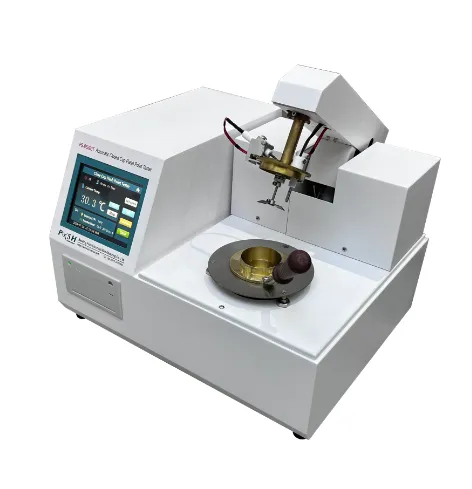TEL:
+86-0312-3189593
 English
English

Telephone:0312-3189593

Email:sales@oil-tester.com

-
 Afrikaans
Afrikaans -
 Albanian
Albanian -
 Amharic
Amharic -
 Arabic
Arabic -
 Armenian
Armenian -
 Azerbaijani
Azerbaijani -
 Basque
Basque -
 Belarusian
Belarusian -
 Bengali
Bengali -
 Bosnian
Bosnian -
 Bulgarian
Bulgarian -
 Catalan
Catalan -
 Cebuano
Cebuano -
 China
China -
 China (Taiwan)
China (Taiwan) -
 Corsican
Corsican -
 Croatian
Croatian -
 Czech
Czech -
 Danish
Danish -
 Dutch
Dutch -
 English
English -
 Esperanto
Esperanto -
 Estonian
Estonian -
 Finnish
Finnish -
 French
French -
 Frisian
Frisian -
 Galician
Galician -
 Georgian
Georgian -
 German
German -
 Greek
Greek -
 Gujarati
Gujarati -
 Haitian Creole
Haitian Creole -
 hausa
hausa -
 hawaiian
hawaiian -
 Hebrew
Hebrew -
 Hindi
Hindi -
 Miao
Miao -
 Hungarian
Hungarian -
 Icelandic
Icelandic -
 igbo
igbo -
 Indonesian
Indonesian -
 irish
irish -
 Italian
Italian -
 Japanese
Japanese -
 Javanese
Javanese -
 Kannada
Kannada -
 kazakh
kazakh -
 Khmer
Khmer -
 Rwandese
Rwandese -
 Korean
Korean -
 Kurdish
Kurdish -
 Kyrgyz
Kyrgyz -
 Lao
Lao -
 Latin
Latin -
 Latvian
Latvian -
 Lithuanian
Lithuanian -
 Luxembourgish
Luxembourgish -
 Macedonian
Macedonian -
 Malgashi
Malgashi -
 Malay
Malay -
 Malayalam
Malayalam -
 Maltese
Maltese -
 Maori
Maori -
 Marathi
Marathi -
 Mongolian
Mongolian -
 Myanmar
Myanmar -
 Nepali
Nepali -
 Norwegian
Norwegian -
 Norwegian
Norwegian -
 Occitan
Occitan -
 Pashto
Pashto -
 Persian
Persian -
 Polish
Polish -
 Portuguese
Portuguese -
 Punjabi
Punjabi -
 Romanian
Romanian -
 Russian
Russian -
 Samoan
Samoan -
 Scottish Gaelic
Scottish Gaelic -
 Serbian
Serbian -
 Sesotho
Sesotho -
 Shona
Shona -
 Sindhi
Sindhi -
 Sinhala
Sinhala -
 Slovak
Slovak -
 Slovenian
Slovenian -
 Somali
Somali -
 Spanish
Spanish -
 Sundanese
Sundanese -
 Swahili
Swahili -
 Swedish
Swedish -
 Tagalog
Tagalog -
 Tajik
Tajik -
 Tamil
Tamil -
 Tatar
Tatar -
 Telugu
Telugu -
 Thai
Thai -
 Turkish
Turkish -
 Turkmen
Turkmen -
 Ukrainian
Ukrainian -
 Urdu
Urdu -
 Uighur
Uighur -
 Uzbek
Uzbek -
 Vietnamese
Vietnamese -
 Welsh
Welsh -
 Bantu
Bantu -
 Yiddish
Yiddish -
 Yoruba
Yoruba -
 Zulu
Zulu
Φεβ . 13, 2025 15:25
Back to list
bdv transformer test
Transformers are the backbone of energy distribution, playing a crucial role in transmitting electricity over long distances and across varied terrains. To understand transformers, one must delve into the intricacies of their windings. For those engaged in energy management, electrical engineering, or industrial equipment production, insights into transformer windings can be pivotal.
Regular maintenance and testing of windings are critical to sustaining their performance and extending transformer life. Traditional approaches involve diagnostics like the Power Factor Test, TTR (Turns Ratio Test), and Resistance Measurement. Innovations in testing technologies now empower engineers with advanced tools such as Sweep Frequency Response Analysis (SFRA) and Partial Discharge Measurement, providing deeper insights into the winding’s health by diagnosing issues like moisture penetration, insulation degradation, and mechanical displacement. Furthermore, the operational temperature and environment are crucial determinants of winding longevity. Thermal management remains a critical facet, where effective cooling systems such as oil or air can mitigate overheating risks. Engineers must ensure that transformers operate within their rated capacity to prevent overheating, which can cause insulation damage and reduce the winding lifespan. Transformers’ windings are embedded in numerous applications beyond large-scale power grids, such as in renewable energy systems, automotive technologies, and consumer electronics. Each application may necessitate specific adaptations to the winding configuration, ensuring that transformers can handle varying power levels, frequencies, and external conditions. With the rising focus on smart grids and sustainable energy solutions, transformer winding designs are continuously evolving. Innovations include the development of superconducting windings, which, although currently in the research and prototyping stage, promise to revolutionize the industry by drastically reducing energy losses and improving efficiency. For practitioners looking to innovate or maintain transformers, understanding the nuances of winding selection and care is vital. Investing in high-quality materials, embracing advancements in diagnostic tools, and adhering to meticulous maintenance routines will ensure that transformers remain reliable, efficient, and sustainable, ensuring robust power delivery today and into the future.


Regular maintenance and testing of windings are critical to sustaining their performance and extending transformer life. Traditional approaches involve diagnostics like the Power Factor Test, TTR (Turns Ratio Test), and Resistance Measurement. Innovations in testing technologies now empower engineers with advanced tools such as Sweep Frequency Response Analysis (SFRA) and Partial Discharge Measurement, providing deeper insights into the winding’s health by diagnosing issues like moisture penetration, insulation degradation, and mechanical displacement. Furthermore, the operational temperature and environment are crucial determinants of winding longevity. Thermal management remains a critical facet, where effective cooling systems such as oil or air can mitigate overheating risks. Engineers must ensure that transformers operate within their rated capacity to prevent overheating, which can cause insulation damage and reduce the winding lifespan. Transformers’ windings are embedded in numerous applications beyond large-scale power grids, such as in renewable energy systems, automotive technologies, and consumer electronics. Each application may necessitate specific adaptations to the winding configuration, ensuring that transformers can handle varying power levels, frequencies, and external conditions. With the rising focus on smart grids and sustainable energy solutions, transformer winding designs are continuously evolving. Innovations include the development of superconducting windings, which, although currently in the research and prototyping stage, promise to revolutionize the industry by drastically reducing energy losses and improving efficiency. For practitioners looking to innovate or maintain transformers, understanding the nuances of winding selection and care is vital. Investing in high-quality materials, embracing advancements in diagnostic tools, and adhering to meticulous maintenance routines will ensure that transformers remain reliable, efficient, and sustainable, ensuring robust power delivery today and into the future.
Previous:
Latest news
-
Using Distillation Range Testers in the Food and Beverage IndustryNewsApr.16,2025
-
The Impact of IoT on Distillation Range Tester PerformanceNewsApr.16,2025
-
The Best Distillation Range Testers for Extreme ConditionsNewsApr.16,2025
-
How Distillation Range Testers Save Time and MoneyNewsApr.16,2025
-
Distillation Devices for Advanced Separation TechniquesNewsApr.16,2025
-
Common Mistakes to Avoid When Using a Distillation Range TesterNewsApr.16,2025



